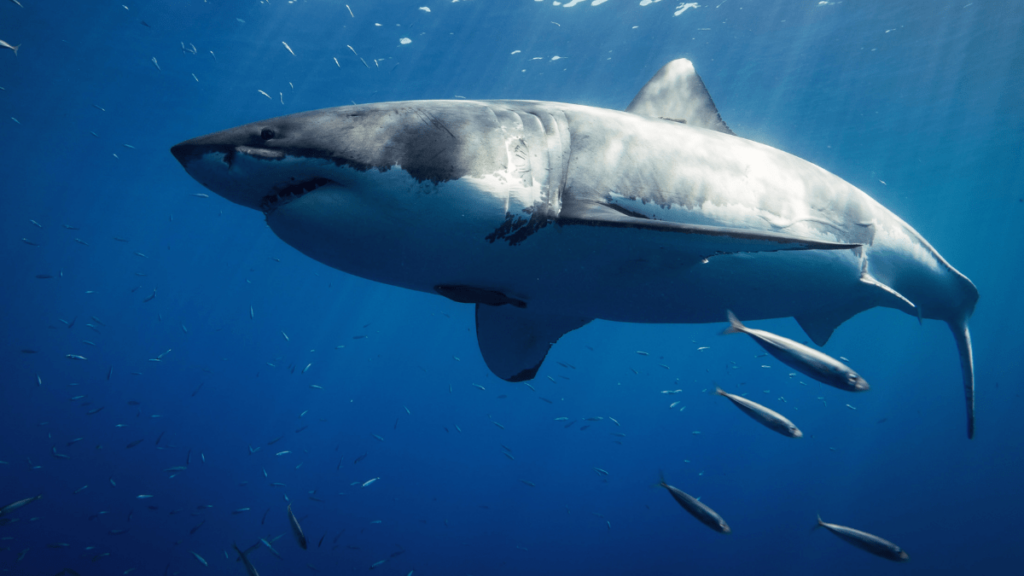One of the world’s most fearsome ocean predators is also one of its most elusive. The overwhelming majority of the world’s people will never lay eyes on a great white shark outside of documentaries, and while many people are happy with that, some would love to see one of these beasts in the flesh.
The problem with seeing a great white in the wild is that it’s extremely expensive (you’d need to cage dive in what is probably a far-flung location) and far from a guarantee (they could simply fail to turn up).
But what about in an aquarium?
“Wait a second,” you’re probably thinking, “there’s aquariums with great white sharks? Can these mighty apex predators even can be kept in aquariums?”
The answer is: kinda. Great white sharks have been kept in aquariums in the past, sometimes for hundreds of days at a time.
So since it’s possible, the question is: why isn’t it done more? Having a great white shark at your aquarium is practically a license to print money since it would draw crowds from far and wide. So why don’t more aquariums do it?
The answer is on the complicated side. So, in an easy-to-digest way, let’s examine the history of great whites in aquariums and why it’s not really done anymore.
Great White Sharks In Aquariums: A Brief History

Attempts to keep great whites in captivity began in the 1970s, with every single attempt ending in disaster.
The shark was even less well understood than it is now (and, to be clear: we still don’t fully understand great whites), and it was not only difficult to capture the shark in the first place but difficult to keep them alive after the fact.
Steinhart Aquarium: 1979
One documented case of a great white shark in captivity was in August 1979 at Steinhart Aquarium, San Francisco.
The baby shark, which had been captured by a halibut fisherman, was transferred to a tank and taken to the aquarium, where it was kept in a large tank with other marine animals overnight.
During that night, scuba divers were on-hand to keep the reluctant and traumatized shark swimming (and therefore breathing).
However, the shark didn’t take to its new environment and it unfortunately died shortly before dawn the next day.
Seaworld: 1976 &1981
Seaworld in San Diego, CA, enjoyed the most success prior to the 2000s, with two sharks held in captivity. The first lasted only 96 hours, while the second was kept alive for 16 days before succumbing.
In both cases, the sharks refused to eat, bumped repeatedly off the walls and glass, and had trouble swimming.
The Monterey Bay Aquarium Great White Shark: 1983, 2000s
By far, the most successful attempts to house a great white shark came from California’s Monterey Bay Aquarium.
The aquarium’s first attempt, in 1983, was moderately successful; it was kept in captivity for 11 days before dying. The shark refused to eat at all during its time in captivity.
In the 2000s, the aquarium really began to enjoy success with the sharks. They captured a small female in 2003 and kept it not in an aquarium but in a netted pen near Malibu.
During this time, they managed to get the shark to feed – an unprecedented feat that bolstered researchers’ beliefs that it was possible to keep a great white in captivity.
In September 2004, the aquarium was able to put its first great white on a long-term exhibition. The shark, a young female, was kept for a record-breaking 198 days before being released back into the wild.
”The only chance people ever had to see one in an aquarium – at the Monterey Bay aquarium – has gone forever.”
Monterey Bay kept a further four sharks in captivity throughout the 2000s and honed their ability to keep the sharks comfortable so that they fed and swam well.
However, some sharks did not take to captivity and were released earlier than planned if they refused to feed or demonstrated agitation.
Despite being the undisputed master of exhibiting great whites, Monterey Bay voluntarily ended its program in 2011.
The purpose of capturing great whites was always primarily a scientific one; having learned as much as they can from great whites in captivity, the institute has switched to studying wild sharks instead.
Okinawa Churami Aquarium: 2016
The most recent attempt to keep a great white in captivity was in Japan’s Okinawa Churami Aquarium in 2016.
The attempt swiftly ended in disaster; the shark died after three days of refusing to eat and swimming erratically.
Why Do Great Whites Have Trouble In Captivity?
Simply put: great white sharks are migratory animals that are accustomed to constant motion and that are wholly unused to confined spaces.
This means that in captivity, they’re constantly bumping up against the walls and glass of even the biggest tanks because it’s still an incredibly tiny space to them.

This factor, plus the stress of being captured and kept in captivity, greatly agitates the shark and means that they often refuse to feed or swim.
Either case leads to death: great whites that don’t eat will typically die within two weeks, while they need to swim in order to draw oxygen in through their gills, and so not doing so leads them to asphyxiate.
These factors, along with the massive cost of capturing, transporting, containing, and feeding such a massive animal, make it extremely unlikely that it will ever be possible to permanently contain a great white shark within an aquarium.
The only chance people ever had to see one in an aquarium – at the Monterey Bay aquarium – has gone forever.
Beyond this, there are also the ethical implications of keeping these magnificent creatures in captivity. Even when successful, it’s a hugely traumatic experience for the shark and removes it from its natural environment for prolonged periods of time.
Even if a shark can be coaxed into eating and swimming, it’s still restricted in its movements and what it eats, and this is a deeply unpleasant experience for the animal.
Aquariums With Great White Sharks Aren’t a Good Idea
Can great white sharks live in an aquarium? Yes – for a time. Should they? As the Monterey Bay team found, although it’s possible to hit upon an environment where a great white can be kept indefinitely, it’s probably not a good idea to do so, and these ocean leviathans are far best left where they were found – in the wild.
